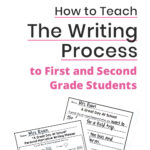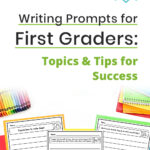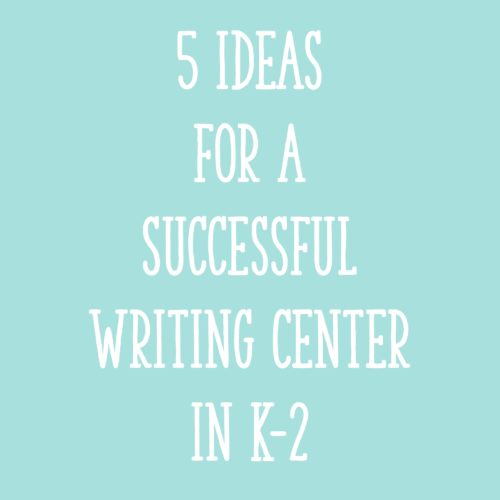Do you want to (or need to!) teach your students to write poems? If so, you might wonder, “Where do I even begin?!” Do you just have them dive in and give it a go? Do you make them follow rules, like rhyming words at the end? Teaching poetry for second graders can feel like a challenging task, especially if you’re asking students to write their own poems.
However, it IS possible to keep poetry writing simple and fun. In this post, I’ll explain exactly how I introduce poems and poetry writing to second graders!
After you read this post, if you would like to view a FREE webinar called “5 Secrets to Getting K-2 Students to Write Independently,” click here for access to that!
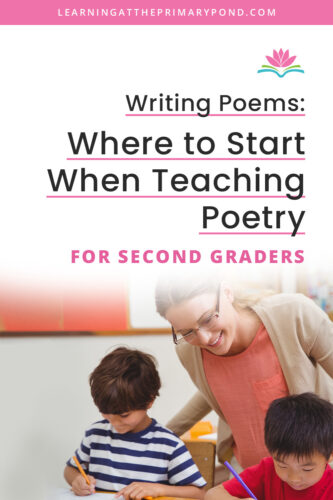
Building Background When Teaching Poetry for Second Graders
Before I have students write their own poems, I like to start with building their background knowledge. “What is poetry?” is the title of the first mini-lesson I have students engaging in. (**All of these poetry mini-lessons and materials you’ll see in the blog are from my 2nd Grade Poetry Writing Unit.)

On the first day of the unit, I gather students together and ask them “What do you know about poems?” After hearing their responses, I’ll say something like “Poetry is a genre, or type, of writing, just like fiction, nonfiction, and opinion writing. We are going to spend the next few minutes exploring some poems. I’ll read you some different poems that I like. Then, we’ll make a chart of things that you notice about poetry.”
Some of my favorite poems to read to students during this “exploration” phase come from “The Random House Book of Poetry for Children” or poems by Shel Silverstein. However, you can choose a variety of poems that you personally enjoy, too! Whatever you choose, make sure to pick a variety – short and long, with and without rhyming words, and on a variety of topics.
Then, in between reading poems, have students help you create an anchor chart (“Things We Notice about Poetry”). You might include some of the following:
- poems are shorter than stories
- some have rhyming words,
- sometimes poems have patterns
- each line is short
- some lines have spaces between them
Brainstorming Ideas for Students’ Poems
After we’ve built a bit of background knowledge together, I have students dive into brainstorming grids. I explain to students that “Writers of poetry are called ‘poets.’ Poets usually write about things that are important to them, or things that they love. They write poems about special places, special people, special animals, and special times in their lives.”
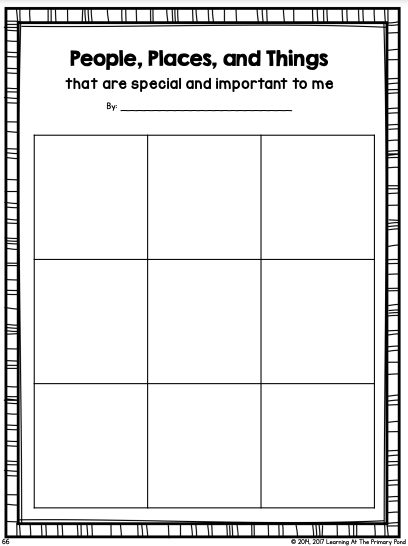
Share Out: I then ask students to think of something that is special or important to them. You can have a few students share out with the class.
Model: Next, I’d model how to fill in a few squares. (i.e. first box = your dog, second box = a sunset, etc.) I’d draw a quick sketch and label it, too.
Think & Partner Share: At this point, I would say to the students, “Before you get started filling out your brainstorming grids, I want you to think of the first two things that you are going to put on your sheet. Remember, you want to think of things, people, and places that are special and important to you.” Give them a brief time to think. Then say, “Turn and tell your partner two things that you are going to put in your grid.” Have students turn and talk.
Independent Work: Finally, pass out the grids and have students begin filling them out independently. I have students hang onto these sheets (i.e. by storing them in a writing folder) throughout our poetry writing unit. This way, whenever they need a new topic for a poem, they can come back to the brainstorming grid for a new idea.
Sequence of Poetry Writing Lessons
Moving forward with the unit, I teach a series of lessons to show students how to write different types of poems (i.e. small moments, acrostics). We also address:
- Using descriptive words in poetry
- Choosing words to evoke the five senses
- Selecting a “small moment in time” to write a poem about
- Incorporating feelings and emotions into poems
- Using rhyming techniques
With each mini-lesson, students get a chance to see a model, practice with me or a partner, and then work on their own to create a poem.
Conclusion
I hope you learned a lot about where to start when teaching poetry for second graders! For a comprehensive writing program that includes all of the materials discussed in the blog (and much, much more!), check out Primary Writing Success. Included in Primary Writing Success are:
- lesson plans (for both writing and grammar)
- student materials
- suggested daily schedules
- pacing guides
- professional development videos
Start your free trial week for Primary Writing Success by clicking here!
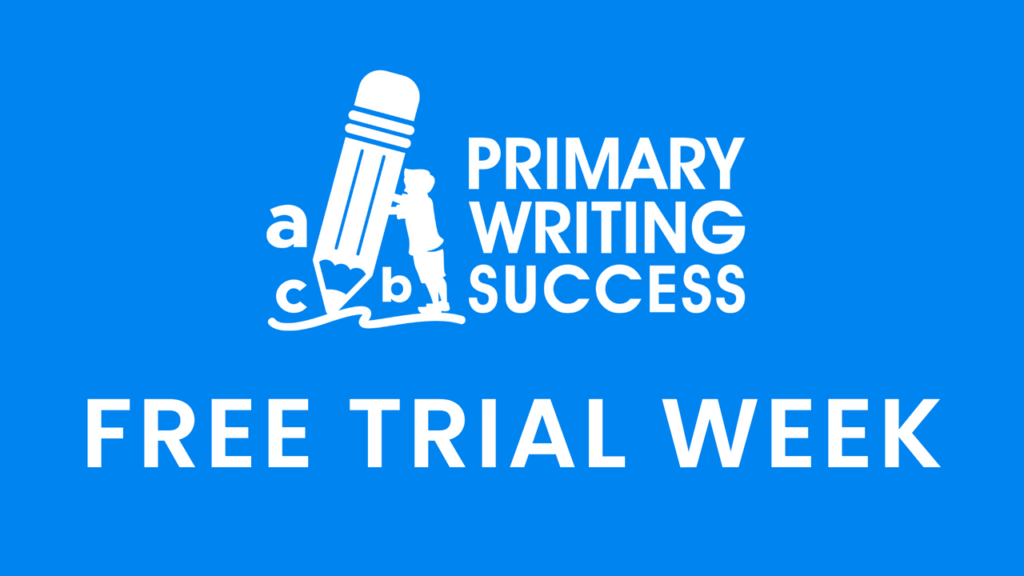
Happy teaching!


